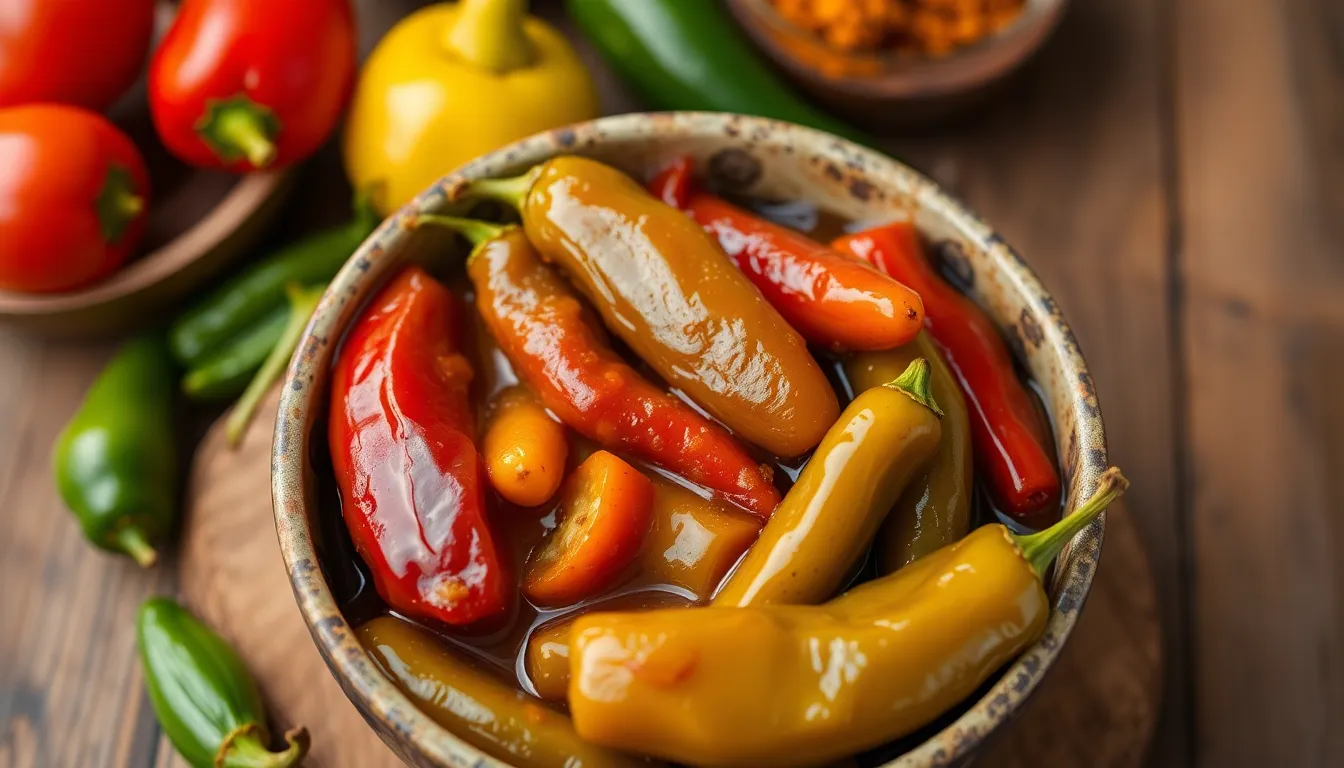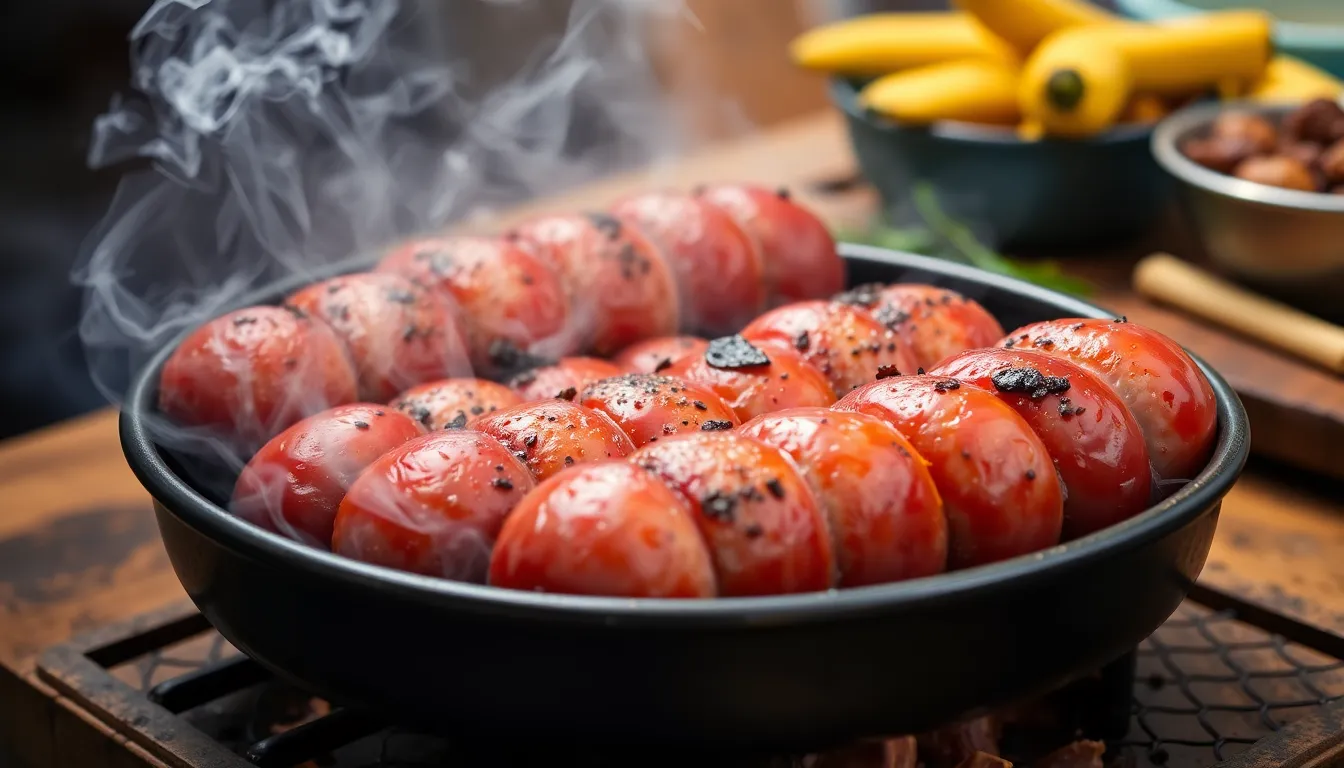How to Make Pickled Peppers: Spice Up Your Life
Introduction
Pickled peppers are a delightful addition to any kitchen, offering a burst of flavor and spice to a variety of dishes. Whether you enjoy them as a condiment, a topping, or a side dish, these vibrant vegetables can elevate meals in a delightful way. Pickling not only prolongs the shelf life of peppers but also enhances their taste, allowing for a unique culinary experience with every bite.
Making pickled peppers at home offers numerous benefits. You can control the ingredients, adjust the spice levels to your liking, and explore countless flavor combinations. The process is simple, and the resulting tangy and spicy peppers are perfect for sandwiches, salads, pizzas, and more. In this guide, we’ll dive into the art of pickling peppers and discover how to create flavorful jars of goodness that will spice up your life.
Ingredients
Basic Ingredients for Pickled Peppers
- Fresh peppers (jalapeños, bell peppers, banana peppers, etc.)
- White vinegar or apple cider vinegar
- Water
- Salt (preferably kosher or pickling salt)
- Sugar (optional, for balancing flavors)
- Spices (garlic, peppercorns, bay leaves, etc.)
HTML Table Example: Basic Pickled Peppers Ingredients
| Ingredient | Measurement |
|---|---|
| Fresh Peppers (e.g., jalapeños, bell peppers) | 2 cups, sliced |
| White Vinegar | 1 cup |
| Water | 1 cup |
| Salt | 1 tablespoon |
| Sugar | 1 tablespoon (optional) |
| Spices (e.g., garlic, peppercorns) | To taste |
Equipment Needed
- Glass jars with lids (mason jars work perfectly)
- Large pot for boiling water
- Cutting board and sharp knife
- Measuring cups and spoons
- Heatproof funnel (optional, but helpful)
Optional Equipment:
- Canning supplies (if you plan to store them long-term)
- Labels for jar identification
Step-by-Step Instructions
Step 1: Prepare the Peppers
Start by selecting the freshest peppers you can find. Choose peppers based on your preferred level of heat and flavor. For example, jalapeños provide a spicy kick, while bell peppers offer sweetness. Rinse the peppers under cool water and slice them into desired shapes—rings, strips, or halves. If you prefer less heat, remove the seeds and membranes.
- Rinse the peppers thoroughly.
- Slice them evenly for consistent pickling.
- Consider varying the types of peppers for a more complex flavor.
Step 2: Make the Pickling Brine
In a large pot, combine equal parts vinegar and water (1 cup each) with salt and sugar (if using). Heat over medium-high heat until the mixture begins to boil. Stir until the salt and sugar are completely dissolved. The boiling process not only helps dissolve the ingredients but also infuses the brine with flavor.
Simmering Tip: Allow the brine to simmer for about 5-10 minutes. This enhances the flavor profile and allows the spices to release their aromatic qualities.
Step 3: Pack the Jars
While the brine simmers, prepare your jars. Make sure they are clean and sterilized. Start packing the sliced peppers into the jars, layering them tightly but not overly compressed to allow for even brining. You can also add spices like garlic cloves and peppercorns between the layers of peppers for added flavor.
- Use a heatproof funnel to make pouring easier.
- Leave about half an inch of space at the top of the jar.
Step 4: Pour the Brine
Once the brine is ready, carefully pour it over the packed peppers in the jars, ensuring they are fully submerged. Leave about half an inch of headspace to allow for expansion. As you pour, you may notice air bubbles forming; gently tap the jars on the counter to help release any trapped air.
Step 5: Seal and Process
Seal the jars with lids while the brine is still hot. If you’re using the canning method, place the jars in a boiling water bath for about 10-15 minutes to ensure they are properly sealed. For refrigeration pickling, simply let the jars cool to room temperature and then place them in the fridge.
Flavor Variations
Once you’ve mastered the basic pickling process, the real fun begins—experimenting with flavors! Here are some unique flavor combinations to consider:
- Add fresh herbs like dill, oregano, or thyme.
- Use different types of vinegar for unique flavors (e.g., balsamic vinegar for a sweeter brine).
- Experiment with spices such as mustard seeds, coriander, or crushed red pepper flakes for added heat.
Cultural Variations: Different cultures have their own beloved ways of pickling. For example, in Mexican cuisine, you might find pickled jalapeños with carrots and onions, while Italian-style pickled peppers often include herbs and garlic.
Storage Tips
Once your pickled peppers are prepared, store them properly to maintain their quality:
- Refrigerated pickled peppers can last for several weeks to months.
- If canned properly, sealed jars can last up to a year in a cool, dark place.
- Always check for signs of spoilage before consuming, such as off smells, discoloration, or mold.
Enjoy the vibrant flavors of your homemade pickled peppers in salads, sandwiches, or as a zesty side. Spice up your life with every bite, and embrace the culinary adventure that comes with pickling!




